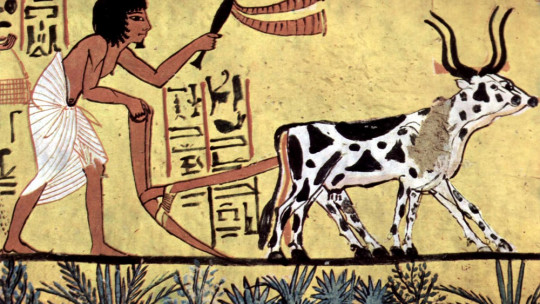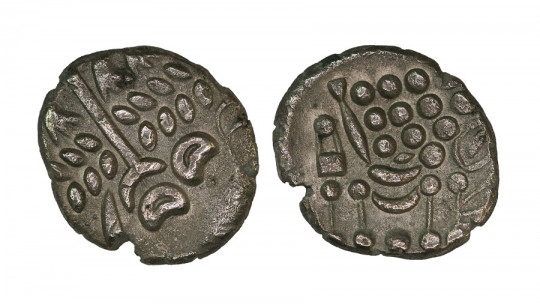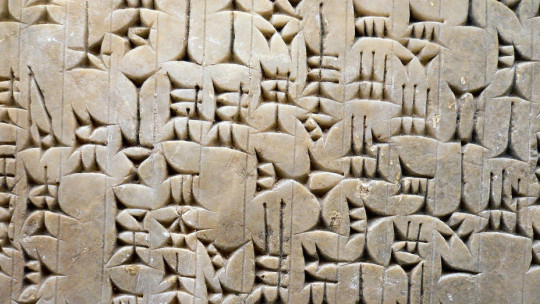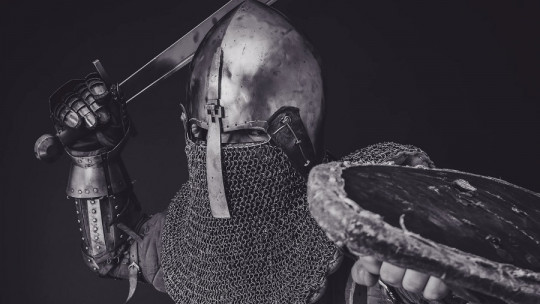
Egypt, Greece, Rome… there is much we know about countless peoples and civilizations that preceded us, and whose role in the world ended up causing our lives to be what they are now. All of this is mainly thanks to the invention of writing, which allowed us to record the events that occurred in the world. It is from the invention of this that we can begin to talk about history. But… and before that? What happened before human beings began to record in writing what was happening in the world in which they lived?
Of most of the events that our most remote ancestors experienced, everything that our species experienced before the invention of writing, we can only speculate through the analysis of bone and tool sites, as well as a few artistic representations. Based on these elements, human beings have tried to organize a timeline that helps us understand our past, establishing different stages of prehistory
The main stages of prehistory: what are they?
Human beings have been on earth for hundreds of thousands of years, leaving their mark. Since his appearance, our species has had to face countless dangers and had to fight to survive. Without written documents that determine the great events that occurred between peoples and tribes, historians, archaeologists and anthropologists They have divided prehistory into different stages based on the instruments and materials they used our ancestors.
It is necessary to keep in mind, however, that depending on the region of the planet we are talking about, the development of new technologies and techniques could have occurred sooner or later, with a gap existing between the duration of the different ages depending on the place in which we are located. let’s find. Below we will see some of the main stages of prehistory. The dates are approximate and may vary greatly depending on the location.
Stone Age (up to 6,000 BC)
The first of the stages of prehistory that has been identified is the stone age, characterized by the creation of various tools made of this material, both for hunting and other uses. Technically it would include from the appearance of the first hominids to the use of metal as a tool. Human beings were grouped into small groups or clans, and were mainly nomadic hunter-gatherers (although at the end of this age the first fixed settlements, agriculture and livestock farming appeared). Within the Stone Age, three major periods stand out.
1. Paleolithic (2,500,000 BC -10,000 BC)
The Paleolithic is the first of the periods considered prehistory, which would go from the appearance of the first tools created by hominids. It is also the longest period or stage. During this period much of Europe was frozen, being located in the glacial stage. In this stage There were different species of hominids besides ours As the Homo habilis or the Homo neanderthalensiswhich would eventually become extinct.
Our diet was mainly based on gathering fruits and berries and hunting, being the human being a hunter-gatherer This stage of the Stone Age can, in fact, be divided into three: lower, middle and upper paleolithic.
The Lower Paleolithic is the period of time that extends approximately from the appearance of man (which is assumed to be around two and a half million years ago) until approximately 127,000 BC. The first tools found, made in a rudimentary way with stone, date from this period. carved through friction with others.
The Middle Paleolithic corresponds to the period that would go from that date until approximately 40,000 BC. This stage corresponds to the presence of the Homo neanderthalensis in Europe, with the control of fire, the first known funerary rites and the first ornamentations and cave paintings already existing. The tools created used the Levallois method which consisted of the production of stone flakes that were shaped (at least the upper layer) before being extracted.
Finally, we would consider the Upper Paleolithic to be the period between 40,000 BC and 10,000 BC. One of the main milestones of this stage is the migration and expansion of Homo sapiens sapiens in Europe after emigrating from Africa, as well as the disappearance of the Neanderthals. Rock art becomes common and the domestication of animals such as the wolf begins.
2. Mesolithic (10,000 BC- 8,000 BC)
The second of the periods belonging to the Stone Age, the period known as Mesolithic, largely corresponds to the end of the last Ice Age In general, humanity remained primarily nomadic, with the exception of a few settlements that were beginning to flourish. Indeed, the first villages are beginning to appear. Elaborate tools tend to reduce in size and people are less inclined to seek refuge in caves. Another characteristic element is that the first cemeteries are beginning to be seen.
3. Neolithic (8,000 BC- 6,000 BC)
The Neolithic is the last of the Stone Age periods. This stage is characterized by the birth, expansion and progressive improvement of agriculture and livestock Human beings no longer needed to make large migrations in pursuit of herds of animals to hunt, and settlements began to emerge that over time would become great civilizations.
Age of metals (6,000 BC- 600/200 BC)
The so-called age of metals corresponds to a period in which human beings stopped using stone to use metal and in which the first civilizations and cultures would begin to appear
1. Copper Age (6,000 BC- 3,600 BC)
Copper was one of the first metals that were used as a material to create tools, producing elements that were more efficient and sharper than stone. Initially it was used without melting, using the same mechanisms as with stone. Over time you would begin to experiment and metallurgy would eventually emerge
2. Bronze Age (3,600-1,200 BC)
Stage characterized by the use of bronze as a manufacturing material. In addition to bronze, other materials such as glass also began to be worked on. During the bronze age. The cremation of the bodies of the dead and the placing of ashes in ceramic urns is also observed. The different cultures of antiquity had already appeared, such as the Mycenaean
3. Iron Age (1,200 BC- 600/200 BC)
This stage is characterized by the use of iron as a material to create tools. This use is very complex and requires a high level of technique. This stage, in fact, could already be considered within history, since some of the main civilizations of antiquity already existed and in some places writing has existed since approximately 3,500 BC. However, The generalization of the use of iron would not occur in Europe until the existence of the Roman Empire (one of the reasons why, although writing already existed, this stage is still considered within prehistory)
And in America?
The aforementioned stages are those that are generally used at the European, Asian and African levels. However, The stages of prehistory varied greatly in other regions of the world An example is the prehistory that the Native American people lived through. For example, these people did not begin to use iron until they were invaded by people from Europe. The writing as such corresponds to the last moments of the Olmecs, about whom there is not much information precisely due to this fact.
Prior to this, American culture is considered to have the following stages of prehistory.
1. Paleoindian stage (up to 10,000/8,000 BC)
This stage is the longest in American prehistory, including everything that happened before 8000 BC. This does not mean that there were no major developments before 8000 BC, but there is no evidence of elements that allow a clear differentiation. Its beginnings are not clear, since it is not entirely clear when the American continent began to be populated by human beings.
It could be considered the equivalent of the Paleolithic, with its lower, middle and upper subperiods. The existence of a population with stone tools is observed, mostly hunter-gatherers who they managed to confront the megafauna existing at the time At the end of 8000 BC the ice began to retreat, which caused great changes in the ecosystem of numerous species.
2. Archaic stage (10,000/8,000 BC – 1,500 BC)
Stage that begins with the retreat of ice from a large part of the continent. The settlers of America began to stop being nomadic hunter-gatherers and little by little began to establish towns and the first cities. Animals began to be domesticated and plants cultivated
3. Formative or preclassical period (between 1500 BC and 900 of our history)
This stage is characterized by the expansion of agriculture and the formation and peak of the first hierarchical societies known on this continent. Among them, the Olmec civilization stands out.
4. Classic period (292 and 900)
The beginnings of this period correspond to the invention of writing in America. This is the most documented stage of pre-Columbian history in which the Olmec civilization disappeared and one of the best-known Mesoamerican civilizations appeared: the Mayan civilization.
5. Postclassic (between 900 and the arrival of Columbus in America, in 1527)
In this last period prior to the meeting with the peoples of Europe, which in fact is already considered historic because written records have been found. The Mayans began to decline and they appeared among other empires such as the Aztec or the Inca. Agriculture was the economic base, and there was a period of relatively frequent migrations and conflicts. Metallurgy and work with minerals and metals also appear for the first time.








